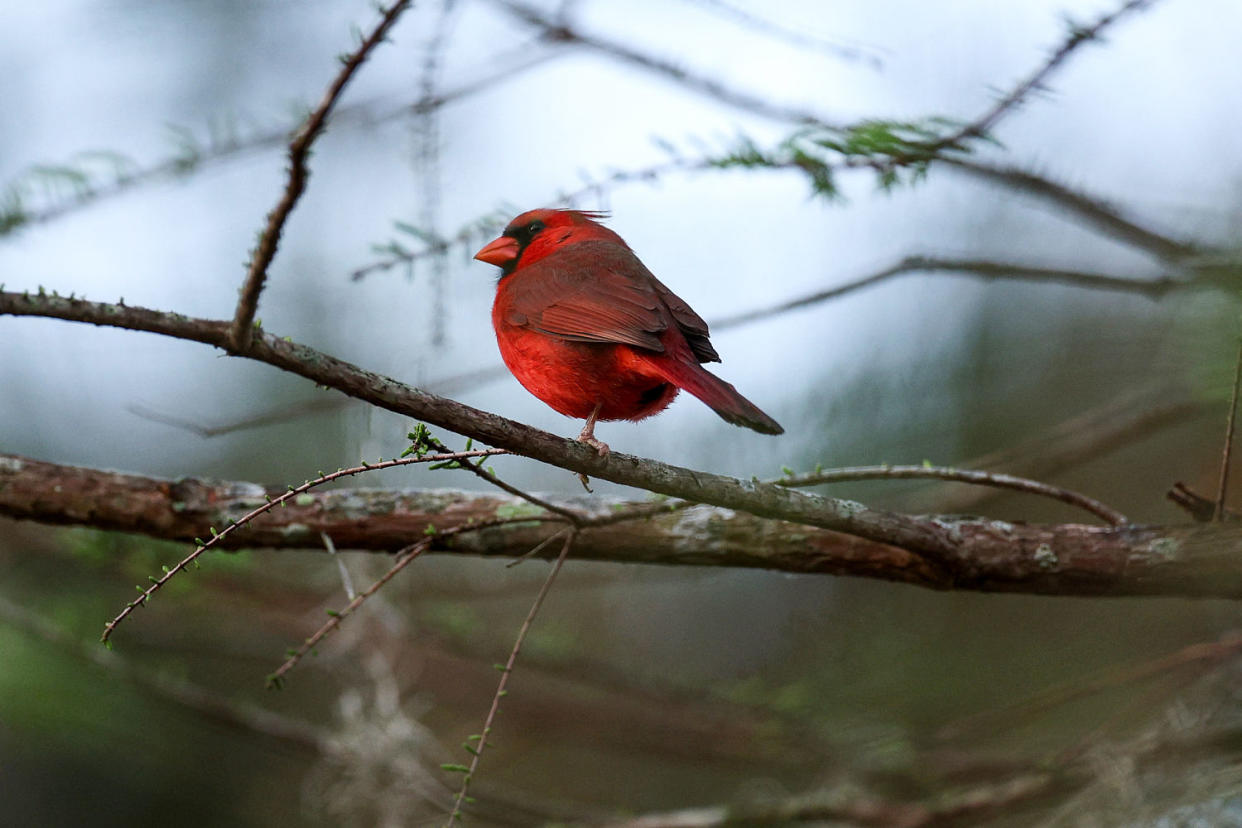As temperatures rise, songbirds struggle to keep young healthy, researchers find

Songbirds like cardinals and sparrows follow the same schedule every year. In spring, they build nests and raise their young from nestlings to fledglings — but as springtime temperatures get warmer due to climate change, scientists have observed bird populations struggling to keep their offspring alive.
A study published Thursday in the journal Science examined over 150,000 nesting attempts from 1998 to 2020 and found that warmer-than-average temperatures during nesting seasons significantly hampered the reproductive success of over 50 bird species, particularly songbirds.
For birds nesting in agricultural spaces with little tree cover or shade, the probability of successfully raising at least one nestling dropped by 46% when temperatures were abnormally high.
The paper echoes rising concerns from ecologists and bird scientists, known as ornithologists, that the world is in the midst of a massive bird decline. Since the 1970s, North America’s bird population has dropped by almost 3 billion, and birds like sparrows, swallows, warblers and finches are continuing to disappear.
The alarming trend is likely due to several factors, such as pesticide pollution, habitat loss and climate change — including extreme heat that prevents nestlings from reaching maturity, said Katherine Lauck, a researcher at the University of California, Davis and lead author of the study.
In the nest, young birds are unable to regulate their body temperatures, which makes them more vulnerable to extreme temperatures, Lauck said. The nestlings are also completely dependent on their parents to bring them food, a task made more difficult in the heat, they added.
“The reproductive cycle of birds makes them particularly vulnerable to the impacts of climate change,” Lauck said.
Scientists have already found that rising temperatures have caused some species to nest earlier during cooler months and that some birds reaching maturity have been getting smaller. And in some cases, such as during Australia’s recent extreme heat waves, both baby birds and adult birds have dropped dead due to the heat.
The study emphasizes that the most vulnerable birds lived in unshaded agricultural areas, while those bird populations living in forests with plenty of tree cover and shade were largely unaffected by warmer-than-average temperatures — in fact, high temperatures slightly increased the probability of nestling success for forest birds.
The difference in reproductive success between forest and agricultural bird populations highlights how land use can exacerbate high temperatures for wild birds, said Conor Taff, an ecologist and researcher for the Cornell Lab of Ornithology who was not involved in the study.
Taff added that protecting bird populations from heat can be as simple as introducing forest patches in agricultural areas to give birds refuge from high temperatures, but the main work is reducing greenhouse gas emissions to limit global warming.
For many ecologists, conserving bird populations is essential for preserving healthy ecosystems. David Wiedenfeld, the senior conservation scientist at the American Bird Conservancy, who was not involved in the study, said birds provide critical services: They play roles as pollinators, exterminators and fertilizers, and for many, they are simply beautiful to observe.
The fact that bird populations are declining is extremely concerning, Wiedenfeld said.
“Birds are literally the canary in the coal mine,” he said. “The birds are good indicators of what’s going on in the environment.”
This article was originally published on NBCNews.com

